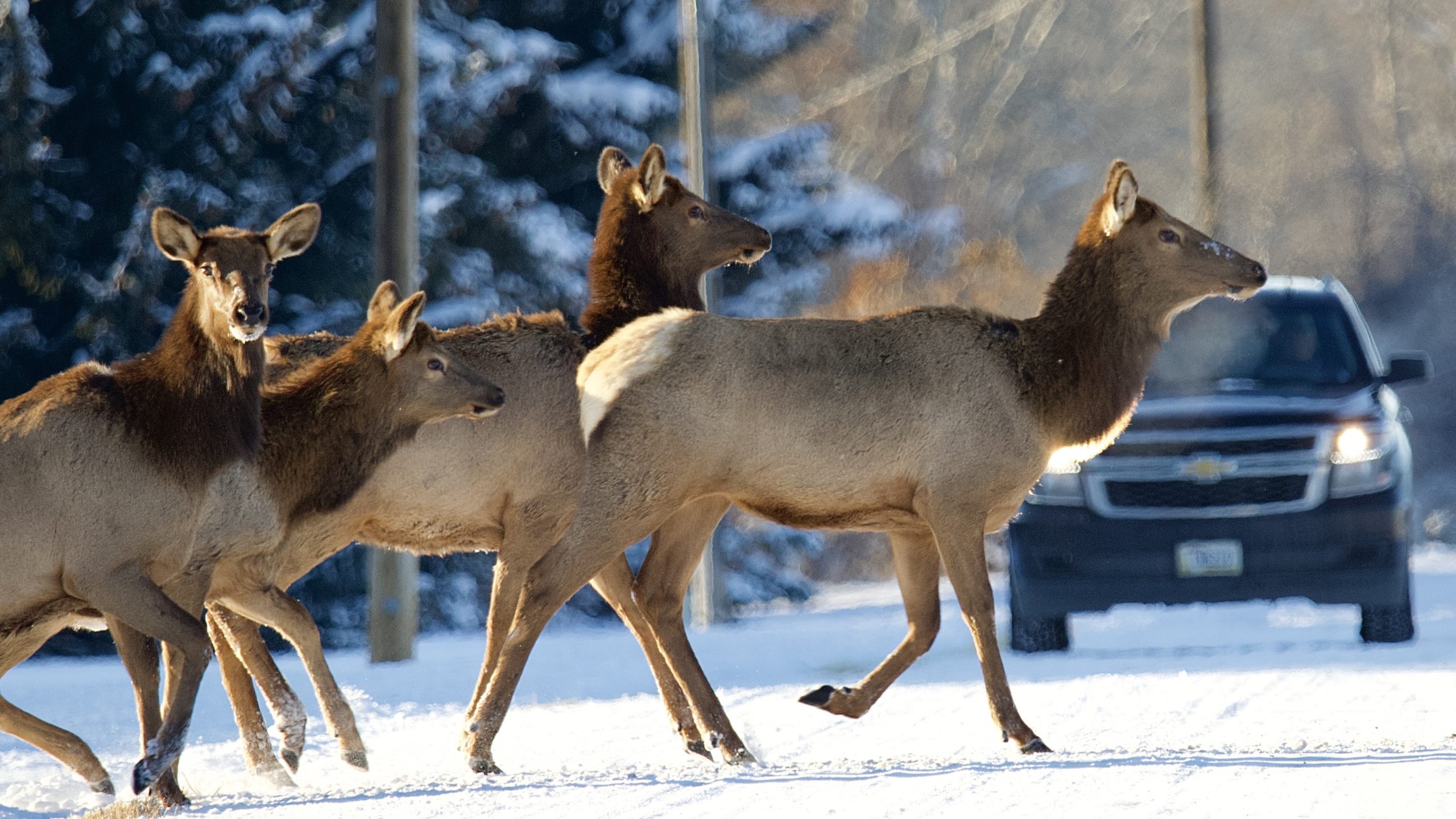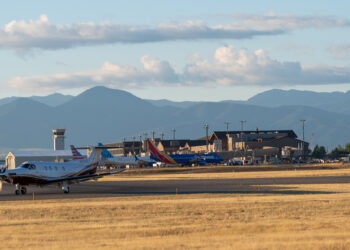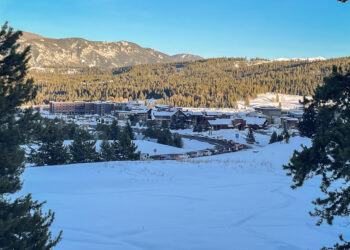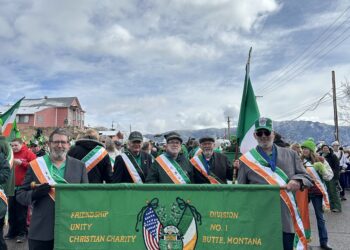Editor’s note: This is the second of a three-part series looking into why elk and vehicles are colliding at unprecedented rates on the highway between Gallatin Gateway and Gallatin Canyon. This piece dives into the state’s management policies and priorities. The final installment will look at management successes and ways people and wildlife can peacefully coexist.
By Ryan Strother EBS CONTRIBUTOR
An uptick in the elk population, land development, and increasing traffic between Bozeman and Big Sky have led to increased collisions with wildlife along U.S. Highway 191. Experts say hunting access and the complexities of a solution like a wildlife overpass are major obstacles to permanently improving human-wildlife interactions in the Gallatin Valley.
Julie Cunningham is a wildlife biologist for Montana Fish, Wildlife & Parks who manages ungulates in eight hunting districts around Bozeman. In January 2022, she counted 714 elk in Hunting Districts 301 & 309—an area covering most of Bozeman and the southeastern Gallatin Valley—a number well above the FWP’s objective herd size of 500 and the target range of 400-600 elk.
According to Cunningham, one of the major challenges with managing elk in the Gallatin Valley is how difficult it is to hunt in HD 309. While HD 301 is 87% public land and access is easy, elk tend to congregate north in HD 309 where irrigated agricultural lands provide good forage and security.
The city of Bozeman and the southern stretches of the Gallatin Valley lie in Hunting District 309, which is 95% privately owned land. Despite liberal hunting regulations, difficult land access and restriction of high-powered rifles in most of the district pose a significant challenge for hunters targeting elk.
“We’ve tried to make the regulations as liberal as possible, but one of the challenges [for hunters] is … how do you find the access? If a landowner is uncomfortable with hunting for whatever reason, then they deny the access and we can’t get the elk harvested. So that’s a challenge in the district,” Cunningham said.
Development is influencing elk behavior
Land development in the valley has also changed elk behavior. Subdivision has led to the loss of elk habitat in the eastern part of Gallatin Valley. The elk, Cunningham says, used to winter over by Bear Canyon more than they do now. Instead, the elk have congregated in the Gateway area where they’re using habitat on both sides of Highway 191. Increasing traffic between Bozeman and Big Sky has led to a high number of collisions between vehicles and wildlife, and public calls for a wildlife overpass, speed reduction, signage, and other efforts to mitigate collisions.
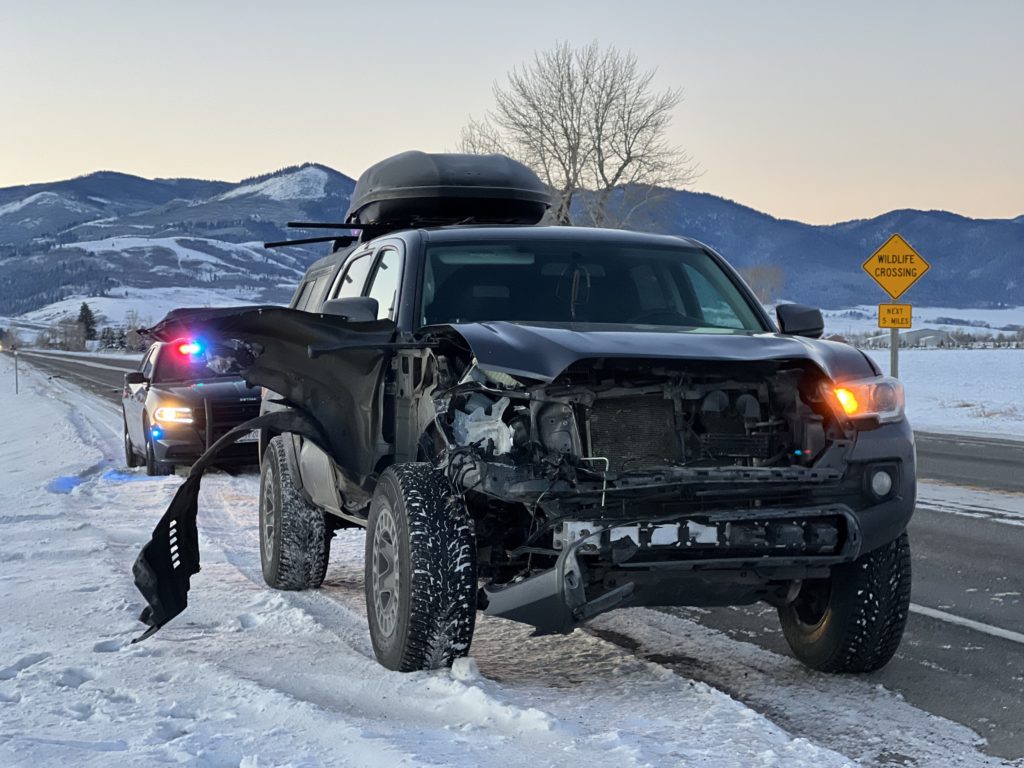
Much like the complexities of managing population numbers, public calls for solutions to reduce elk collisions like speed limit reductions and wildlife overpasses are not as simple as they seem, Cunningham says.
Cunningham suggests a speed reduction on 191 might not automatically boost safety. Though lower speeds could reduce animal collisions, it could also increase collision risk between cars. Even with a lower speed limit, some portion of drivers will feel they are safe to drive the highway’s designed speed of 70 mph, leading to unsafe passing practices by speeders overtaking drivers obeying the limit.
“That speed differential will cause greater human safety risk and property damage risks than leaving it at 70 and allowing the wildlife collisions,” Cunningham said.
What about an overpass?
Experts say the expense and permanence of such a solution can only be justified if there are assurances that the land currently used by elk and other wildlife will remain accessible for the typical 75-year lifespan of an overpass.
Elizabeth Fairbank is a road ecologist for the Center for Large Landscape Conservation. The CLLC has partnered with the Western Transportation Institute on an assessment of Highway 191 between Four Corners and West Yellowstone, with results to be released in early 2023. While findings from that study are still in the works, Fairbank says conservation easements on private land are crucial for planning something like a wildlife crossing.
“In order to be able to make those kinds of major investments [like a wildlife overpass], you have to have either public land on either side of the road or you have to have land that has some kind of durable conservation agreement. Typically, that’s a conservation easement,” Fairbank said.
The 2021 Gallatin County Growth Policy designates an area in the southern portion of the Gallatin Valley as a winter forage area for elk and a high-value area for wildlife. The county may consider potential for habitat fragmentation and barriers to wildlife movement among other factors when evaluating a proposed subdivision’s impacts on habitat. Still, agencies responsible for funding and building a permanent structure like an overpass may need more assurances that a bridge will connect wildlife habitat for years to come.
“The rate of development in Gallatin County is so extreme that unless there’s guaranteed protection of the land on either side of that overpass, what we could end up with is a really nice pedestrian crossing between two condominiums in five years or 10 years,” Cunningham said.
The timeline for a wildlife overpass or other permanent structure might be a long way off, but there are mitigations in the meantime that may help. Cunningham encourages landowners to allow hunters access to their land.
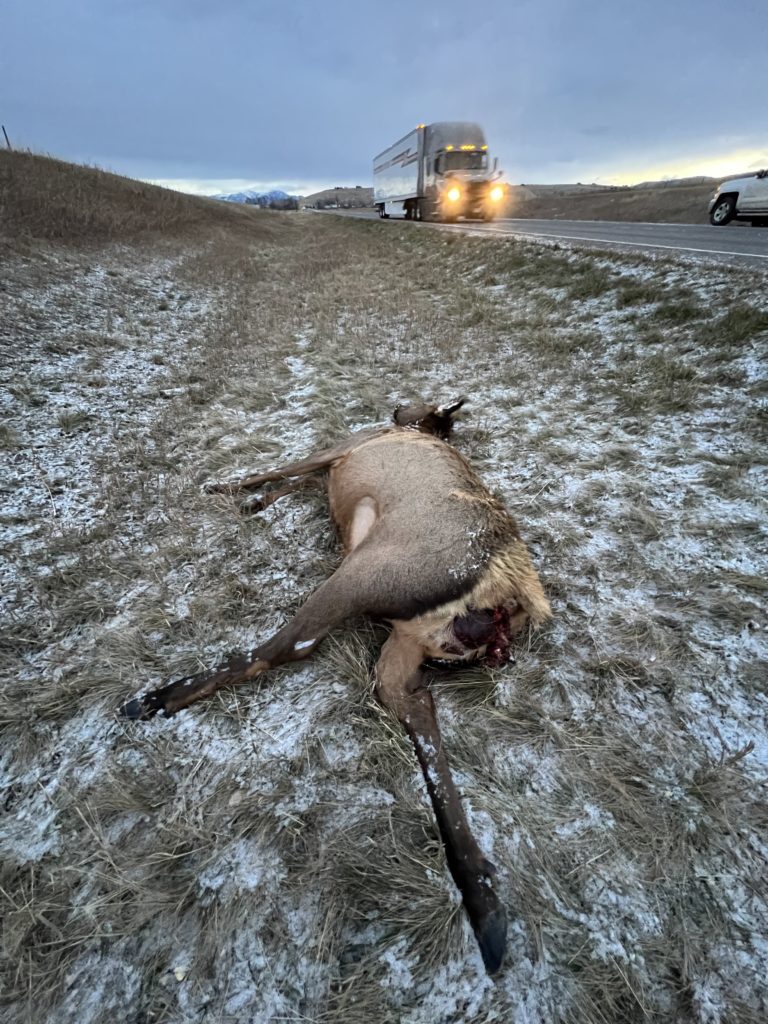
“We have many non-resident landowners who enjoy having land in Montana for a variety of values who maybe didn’t grow up with hunting,” she said. “Maybe they don’t understand it … I wish I could outreach to these folks to talk about the importance of hunting because it does everything.”
Managed hunting, she says, helps control the population, reduce disease risk, and reduce conflict between humans and wildlife. Hunting may also prevent the elk population from becoming urbanized, like they are in Mammoth Hot Springs and parts of the Paradise Valley.
And what would Cunningham say to folks who might romanticize an urbanized elk population in the Gallatin Valley?
“At first it is a novelty, and it is beautiful, and they love it, but then they have a hard time growing their roses or their shrubs or a habituated elk attacks their dog. I encourage folks to not lose their compassion for individual animals, but to start to consider things in a more population-wide perspective.”



